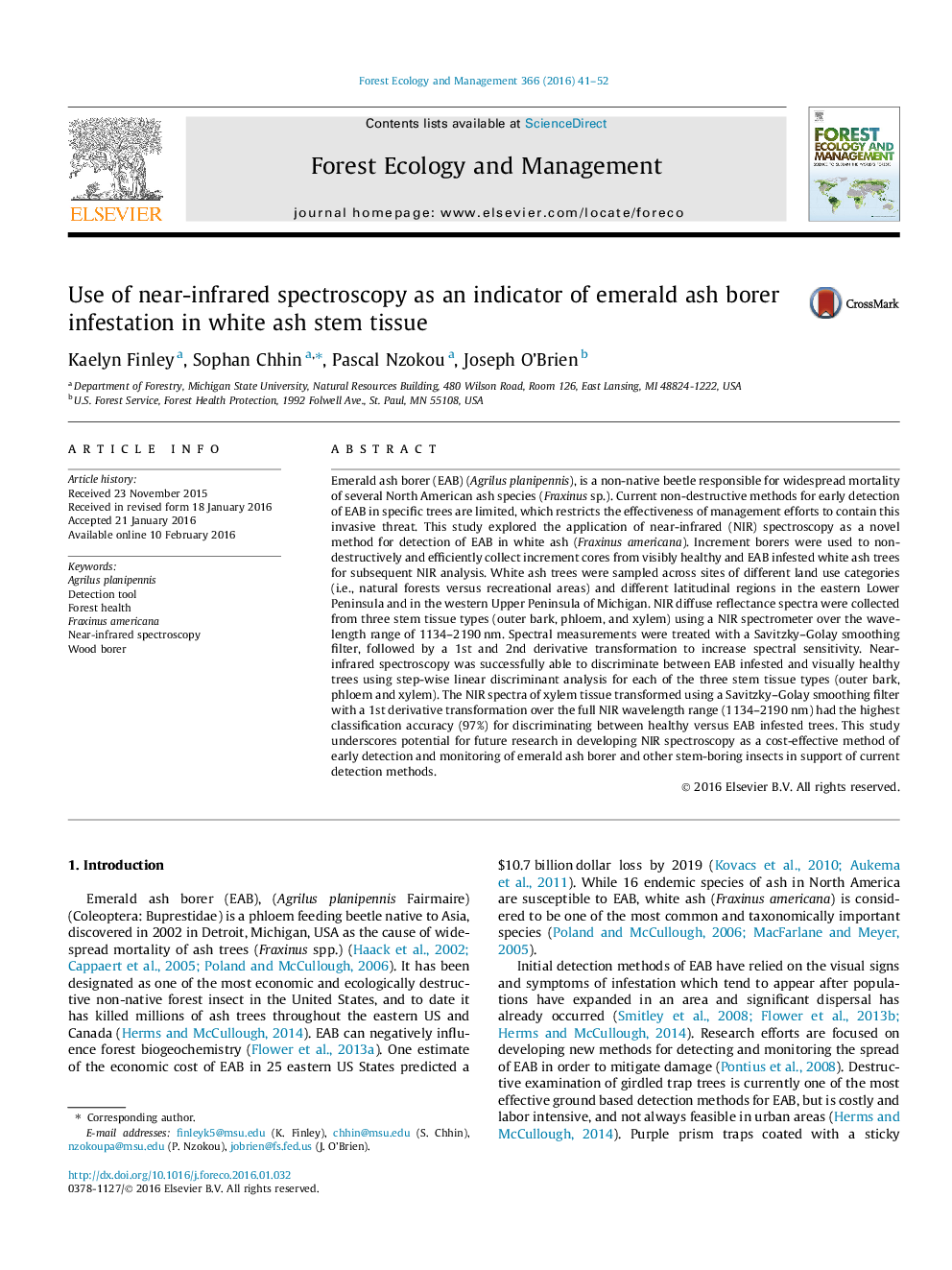| Article ID | Journal | Published Year | Pages | File Type |
|---|---|---|---|---|
| 86036 | Forest Ecology and Management | 2016 | 12 Pages |
•Near-infrared (NIR) spectroscopy detected emerald ash borer (EAB) in white ash.•NIR spectroscopy discriminated between EAB infested and visually healthy trees.•Analysis of NIR spectra was done for outer bark, phloem and xylem tissue.•The 1st derivative spectra of xylem had the highest classification accuracy (97%).
Emerald ash borer (EAB) (Agrilus planipennis), is a non-native beetle responsible for widespread mortality of several North American ash species (Fraxinus sp.). Current non-destructive methods for early detection of EAB in specific trees are limited, which restricts the effectiveness of management efforts to contain this invasive threat. This study explored the application of near-infrared (NIR) spectroscopy as a novel method for detection of EAB in white ash (Fraxinus americana). Increment borers were used to non-destructively and efficiently collect increment cores from visibly healthy and EAB infested white ash trees for subsequent NIR analysis. White ash trees were sampled across sites of different land use categories (i.e., natural forests versus recreational areas) and different latitudinal regions in the eastern Lower Peninsula and in the western Upper Peninsula of Michigan. NIR diffuse reflectance spectra were collected from three stem tissue types (outer bark, phloem, and xylem) using a NIR spectrometer over the wavelength range of 1134–2190 nm. Spectral measurements were treated with a Savitzky–Golay smoothing filter, followed by a 1st and 2nd derivative transformation to increase spectral sensitivity. Near-infrared spectroscopy was successfully able to discriminate between EAB infested and visually healthy trees using step-wise linear discriminant analysis for each of the three stem tissue types (outer bark, phloem and xylem). The NIR spectra of xylem tissue transformed using a Savitzky–Golay smoothing filter with a 1st derivative transformation over the full NIR wavelength range (1134–2190 nm) had the highest classification accuracy (97%) for discriminating between healthy versus EAB infested trees. This study underscores potential for future research in developing NIR spectroscopy as a cost-effective method of early detection and monitoring of emerald ash borer and other stem-boring insects in support of current detection methods.
